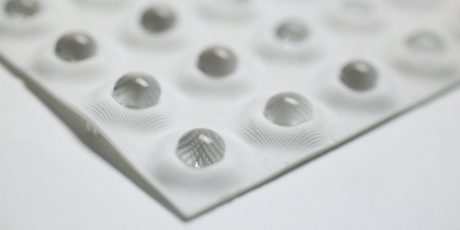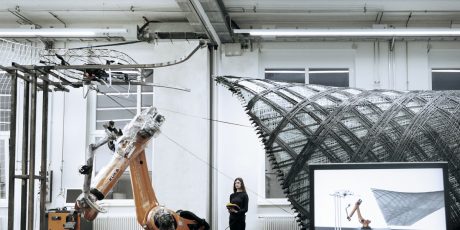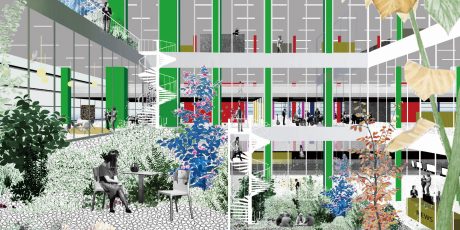Interviews Computational Discourses, Commentary 02: Sabin Lab and Jenny Sabin Studio
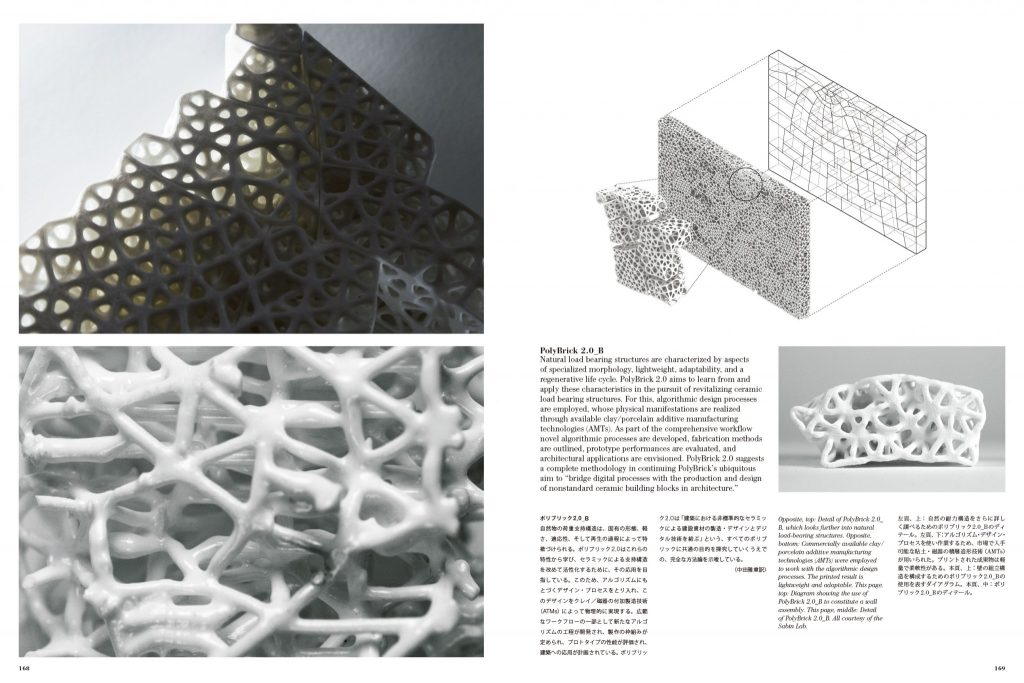
Bringing Science to Life Through Design
The Sabin Lab at the College of Architecture, Art, and Planning at Cornell University is a trans-disciplinary design research lab with specialization in computational design, data visualization, and digital fabrication. We investigate the intersections of architecture and science, and apply insights and theories from biology, robotics, computer science, mathematics, materials science, physics, fiber science, and engineering to the design, fabrication, and production of responsive material structures and systems. Our research that includes bio-inspired adaptive materials, DNA 3D-printed bricks, robotic fabrication, and 3D kirigami assemblies has been funded substantially by the National Science Foundation, Autodesk, the Grainger Foundation, and the National Academy of Engineering. Although there have been tremendous innovations in design, material sciences, bio- and information technologies, direct interactions and collaborations between scientists and architects are rare. This work emerges through rigorous multi-directional and multi-disciplinary investigations that are shaping the future trajectories of these material innovations and technologies for architecture. The work aims to advance materials research and digital fabrication across disciplines in order to effect pragmatic change in the economical, ecological and cultural production of contemporary architecture.
With strong links to the Sabin Lab at Cornell AAP, Jenny Sabin Studio is an experimental architecture studio based in Ithaca, NY. JSS interrogates the space between disciplines as a practice, exploring the intersections of architecture and science and applying insights and theories from locally-gathered data, biology and mathematics to the design, fabrication, and production of material structures and human-centered spatial interventions. We collaborate with scientists and engineers and employ architects, designers, and artists. Our work is highly varied, operating across multiple scales, including building facades, installations, pavilions, outdoor canopy structures, and architecture. Our portfolio is equally diverse, including clients such as Nike Inc., Microsoft Research, Cooper Hewitt Design Museum, the American Philosophical Society Museum, the Exploratorium, and the FRAC Centre. Jenny Sabin Studio’s driving mission is to create community-inspired, science-driven, engaging, and transformative spaces with and for diverse communities.
Design Philosophy
Drawing on historian Detlef Mertins’s term bioconstructivisms, we continue to emphasize and expand the analogic negotiation of morphological behavior as a dynamic template that is then filtered through material organizations, employing digital handcraft in the co-production of materiality and seeking a biosynthesis of the natural model with material manifestation. In contrast to biomimicry, biosynthesis fosters process-based research where design solutions and applications emerge in a shared collaborative space through bottom-up, materially directed, ecological and systemic thinking in design. Our methodology and design process, both in studio projects (Jenny Sabin Studio) and through fundamental research in the lab (Sabin Lab), may be organized into three distinct phases: (1) New Tools and Forms – The production of catalogs of visualization and simulation tools that are then used to discover new behaviors in geometry and matter; (2) Architectural Prototyping – An exploration of the material and ecological potentials of these tools through the production and digital fabrication of experimental structures and material systems, and (3) Building Ecology – Generation of scientifically-based, design-oriented applications in contemporary architecture practice for adaptive building systems, protocols, and material assemblies. The scope of our work probes the visualization and simulation of complex spatial datasets alongside issues of craft, fabrication and production in a diverse array of material systems (woven, knitted, and braided textiles, Rapid Prototype and 3D printed ceramics, bio-plastics and hydrogels, water-jet cut metals). This interest probes the productive tinkering with digital fabrication machines, informed by scientific principles and issues of digital craft and making, to produce bio-inspired material systems and software design tools that have the capacity to facilitate embedded expressions in our built environment. The ‘mess’ in both the lab and the studio is about process, productive failures, rigorous and playful experimentation, and the production of new knowledge.
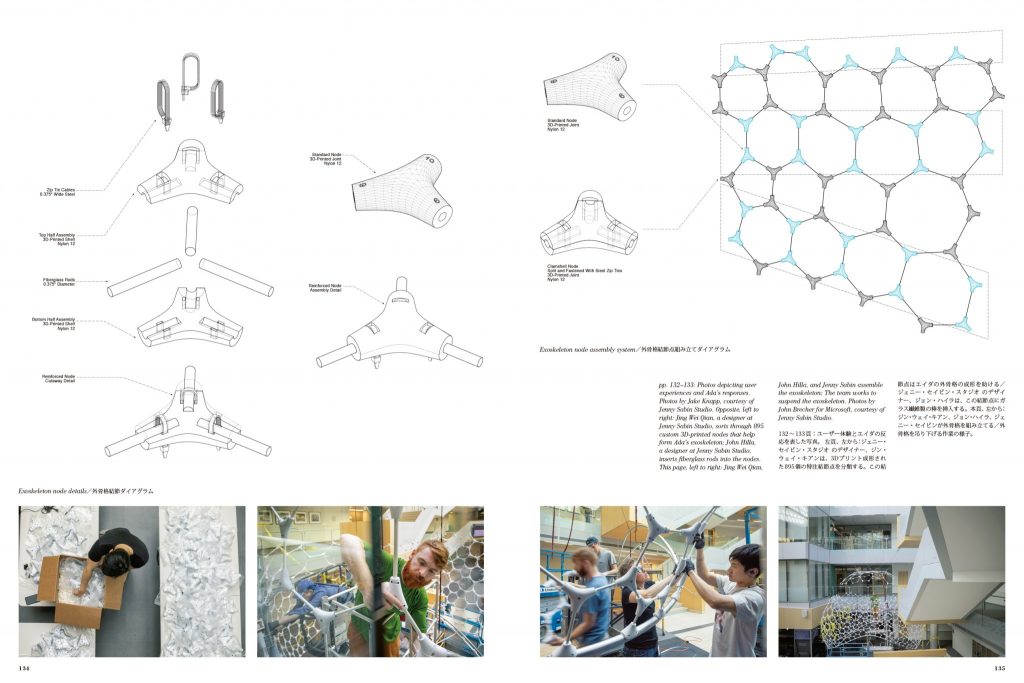
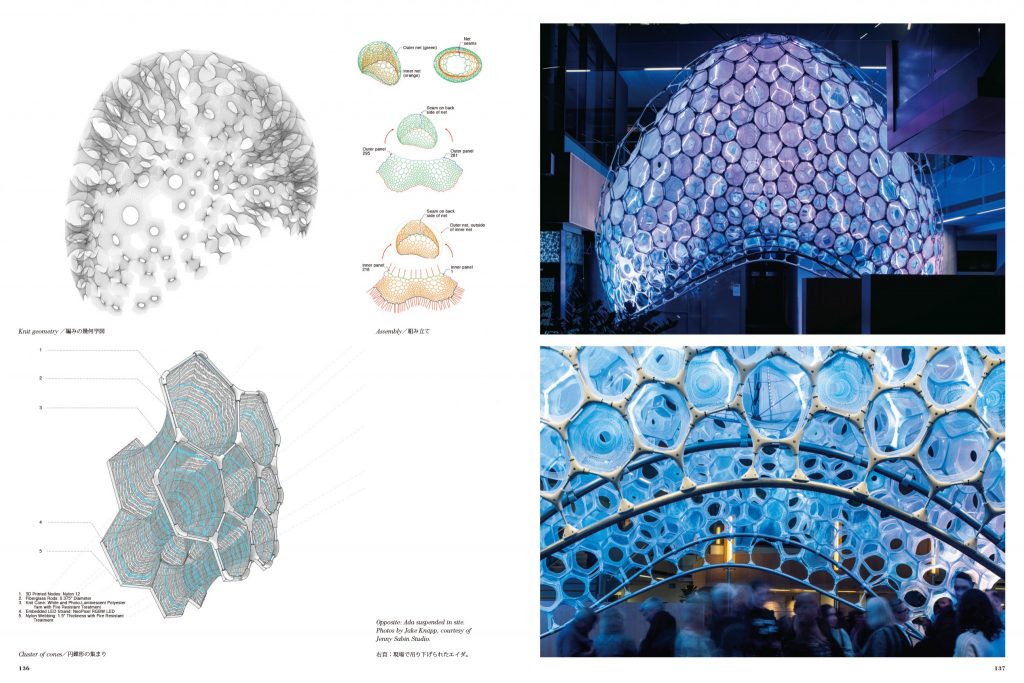
To summarize some of my key projects and their innovative biosynthetic approaches, networks, datasets, emerging technologies such as artificial intelligence and adaptive material systems inform one of the featured projects: Ada for Microsoft Research’s Artist in Residence program 2018-2019. In parallel, the PolyBrick series brings together biological principles with advancements in additive manufacturing and 3D printing. In both projects, by investigating loops that filter datasets through material organizations, the work forms a bridge between the human body and technology as an active overlay that influences and contributes to an alternative material practice in architecture, which frequently touches upon pressing global issues such as material performance and building energy. One of the most important deliverables of the studio and lab concerns fostering new habits of thought and material intuition where non-standard tectonic elements emerge through the rigorous investigation of the behaviors of natural models and their corresponding translation into novel material systems. These transformative models may in parallel provide potent contributions towards issues of construction, digital fabrication and material ecologies in architecture. Critical to this approach are design processes rooted in experimentation across disciplinary boundaries without predetermination of form.
Read further here.




